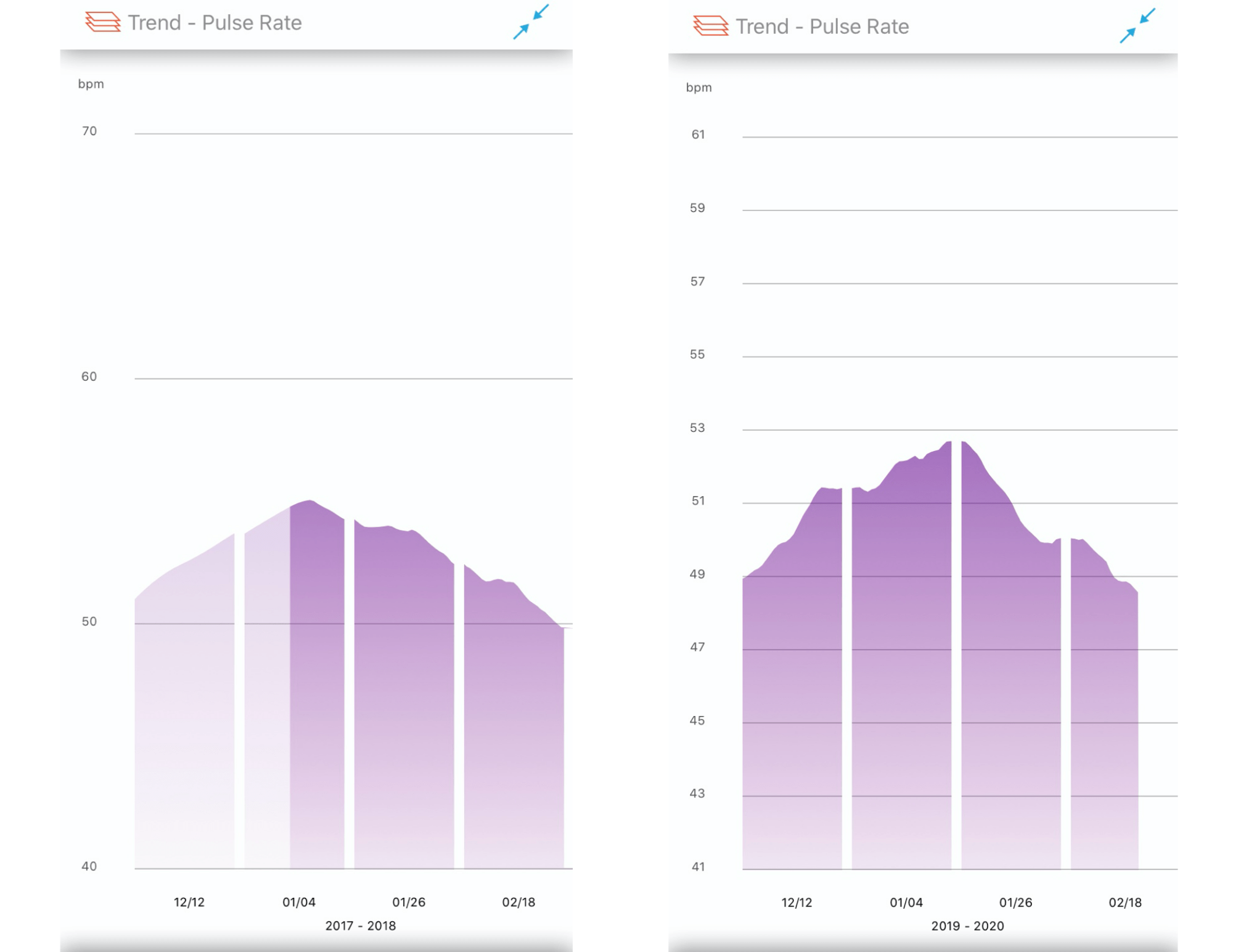Tracking resting pulse rates can be an incredibly useful tool for monitoring recovery, sickness, injury, and fitness progression. I use my first-of-day pulse rate measurements, which are taken with my Cercacor Ember device, in different ways throughout the year.
At the beginning of each season, I use the measurements largely track my fitness gains. For example, after my last race in December, I typically take a 4-6 week break from training. During this time, I see a steady rise in my first-of-day resting pulse rate. During peak fitness, my morning pulse rate is regularly between 40-44 +/- beats per minute (bpm), but as I detrain, this value increases to between 54-56 bpm. When I start back training, my resting pulse rate steadily declines. Below are examples of the rise and fall of my first-of-day resting pulse rates from December 2017-February 2018 and again from December 2019-February 2020. You can see in both instances the increasing average, followed by a decrease as my training volume has increased and fitness levels begin to return.

Once my resting pulse rate “normalizes”, or is regularly reading in the mid-40’s, with the return of a base level of fitness, I primarily use my resting pulse rate to gauge my recovery from day to day. Big jumps from the norm (for example, a resting pulse rate of 55 vs 43-45) would suggest that either I am not recovered, or did not sleep well, which would also inhibit recovery. Sometimes this is expected, but on other days, an elevated pulse rate could be cause for alarm and potentially re-thinking my sessions.
Another way resting pulse rate can be useful is in monitoring recovery from sickness or injury. A few years ago, I crashed while out on a bike ride. For three days after the crash my first-of-day pulse rate was 10-12 bpm higher than normal - my body was clearly under stress from the accident. We were in race week, but rather than pushing through, my coach made me do very little other than rest until my resting pulse rate returned to normal. I believe it made a significant difference in the outcome of my performance on race day, as we allowed my body to recover enough before the race rather than stressing it too soon, in an effort to stay on track with my typical pre-race routine.
Monitoring resting heart rate can have so many useful functions, and with the Cercacor Ember device it is so easy to take the measurement quickly, store the data, and track historical trends in order to make informed decisions around training and racing.





